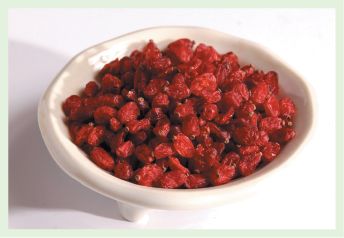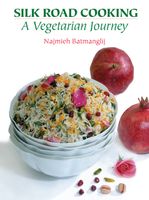Advertisement
Barberries
Appears in
Published 2000

These are the tart, red fruit, high in malic and citric acids, of a bush now only used for ornamental hedges in the West. In Iranian folklore, the thorny wild bushes are said to be the refuge of a gray partridge (white during a certain part of the season), whose wings are stained red by the fruit.
Barberries, usually too sour to be eaten raw (though as a child I often enjoyed them as a tart snack), are little appreciated in the West: In Europe, they were once pickled or made into syrups, jam or wine, and medieval Western recipes mention barberries. However, since the discovery that the barberry bush harbored the spores of a wheat blight, their planting has been prohibited in many areas in the West. In Iran, on the other hand, the berries’ tart taste and bright, jewel-like color make the fruit a favorite for flavoring and seasoning. Fresh barberry juice (often sold by street vendors in Iran) is said to lower blood pressure and cleanse the system.


